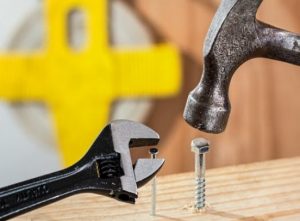How to Use Commas
Commas are punctuation cues to pause; they clarify and order the elements of a sentence. The correct punctuation in a sentence makes your words, and their expression more precise.
When and Where to Use Commas
Things can get pretty confusing when you don’t know which items, clauses, or phrases belong together and commas play an important part in making this clear.
For example:
 “In the New Year, I want to cook more people watch dance often breathe and try new things.”
“In the New Year, I want to cook more people watch dance often breathe and try new things.”
Hmmm…Cook more people? Watch dance? Breathe often? Those would all certainly be ‘new things’!
Let’s look at the same sentence with the commas where they belong.
“In the New Year, I want to cook more, people watch, dance often, breathe, and try new things.”
Look how commas can save you from cannibalism, pretentiousness, and possible suffocation!
The 3 instances where commas are used are: separating elements in a series, separating independent clauses, and separating an introductory word or phrase in a sentence.
Separating Elements in a Series
When you’re listing 2 things in a sentence you use a conjunction to connect them.
“I have bread and butter. “
“Do you want to wear shoes or sandals to the party?”
When you list more than 2 things you’ll use a comma to separate them and use a comma + and (or another appropriate conjunction) before the last item in your series.
“I have bread, butter, cheeses, and meats.”
“Do you want to wear shoes, sandals, heels, or boots to the party?”
Separating Independent Clauses
Comma usage in this instance is a bit more nuanced. When independent clauses are short and relate to the same idea you can omit the comma, provided there is no chance for misinterpretation.
“Some lawyers pursue clients in hospital emergency rooms but many derisively call this ‘ambulance chasing’.”
When 2—or more–independent clauses are separated by one of the 7 coordinating conjunctions (yet, so, nor, for, but, and, or) you will, most likely, need to use a comma between the clauses.
“He left for work 2 hours early, but he was still late.”
“Sheila likes Indian food, Karl likes Mexican food, and Estrella likes French food, so deciding where to eat lunch is always difficult.”
Now one further note, if there is no coordinating conjunction between the independent clauses you DO NOT use a comma—this would be an error called a “comma splice”. It would most often be a semi-colon used when there is no coordinating conjunction.
“I love to visit art museums; my boyfriend loves auto shows.”
Go here for great detail about comma usage for independent clauses.
Separating an Introductory Word or Phrase
When you start a sentence with a word or phrase that introduces the sentence or qualifies it in some way, you place a comma after that word or phrase. *note—these introductory words are often adverbs.
“Meanwhile, I’m waiting around for everyone to arrive to surprise me for MY birthday!”
“Provided everyone can attend, the event will be on the 16th of February.”
 Still, more, however, while, in the meantime…are all common introductory words. Introductory phrases can be prepositional phrases, participle phrases, appositive phrases, infinitive phrases, or absolute phrases.
Still, more, however, while, in the meantime…are all common introductory words. Introductory phrases can be prepositional phrases, participle phrases, appositive phrases, infinitive phrases, or absolute phrases.
Go here for examples of each of these types of phrases.
Comma usage is pretty intuitive once you feel the rhythm of the English language. Commas are the places you take a breath; the places where you set up the punchline. Drilling comma usage in your English writing will actually be a great tool to improve the flow of your spoken English.



















